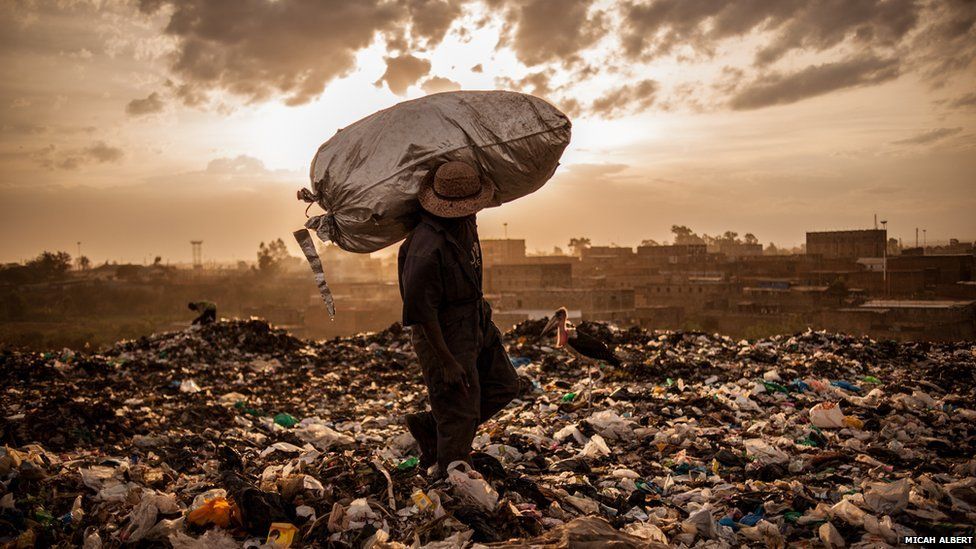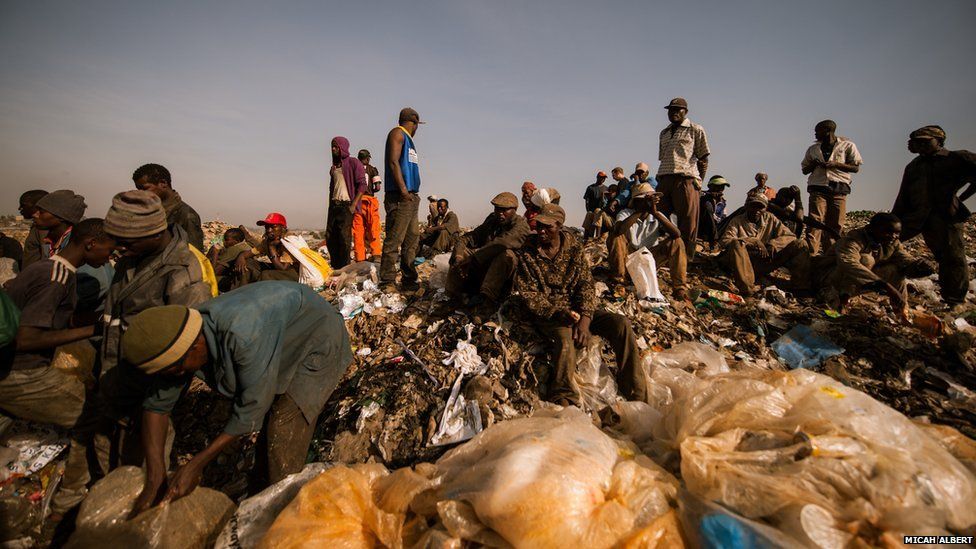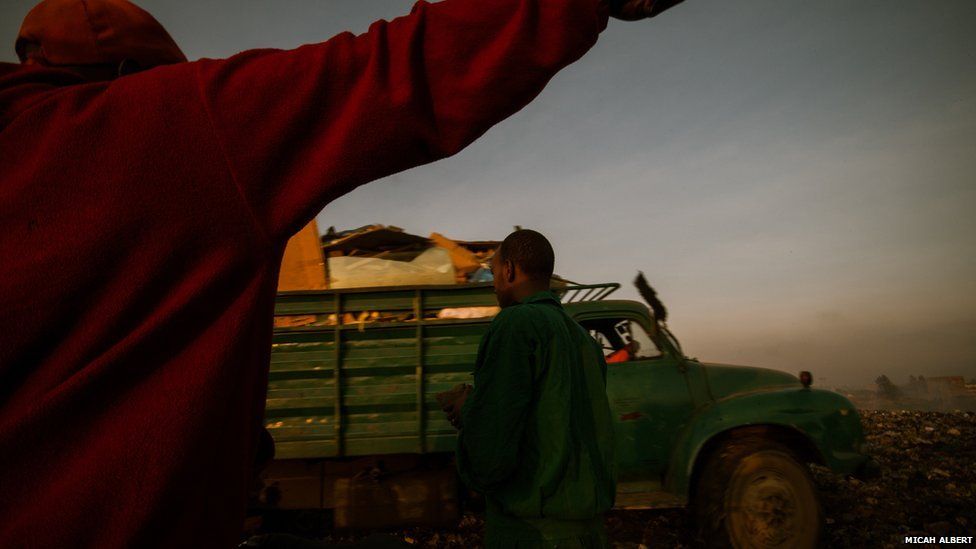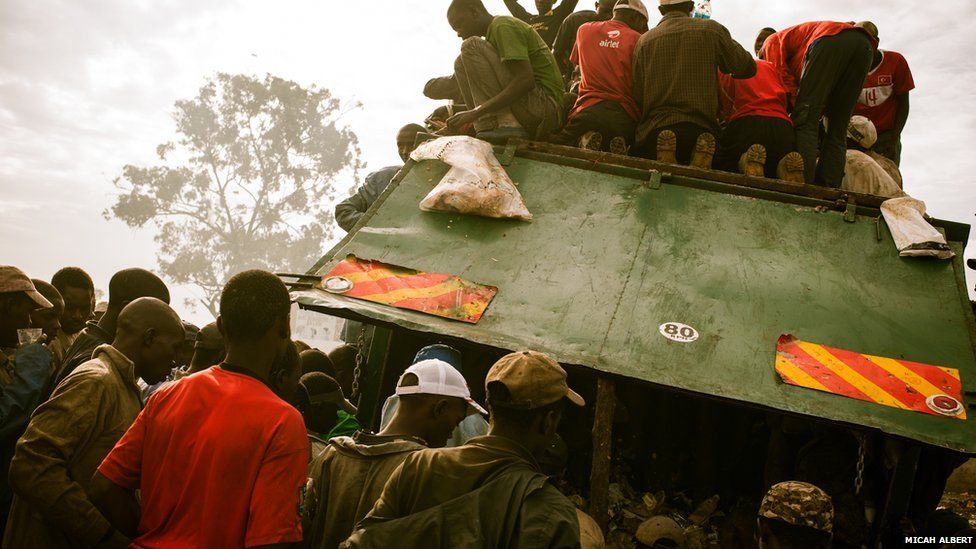May 27, 2012 | BBC
By
Text by David Conrad, Photos by Micah Albert
One of Africa's largest dump sites, Dandora lies less than two miles from Kenya's capital Nairobi. Despite being declared full by the Nairobi council in 2001, an estimated 2,000 tons of waste are still dumped each day. These smouldering mountains of toxic waste shunned by neighboring residents are the scavenging grounds for the self-employed trash pickers who make money selling scraps of metal and rubber. Not only has Dandora become the main source of income for many, but also the cafeteria for nearly a quarter of the 850 students at a nearby school. A trip to the dump is part of the school day because, for some of them, the food waste is the only meal they will have all day.





















